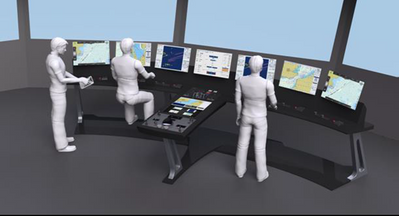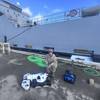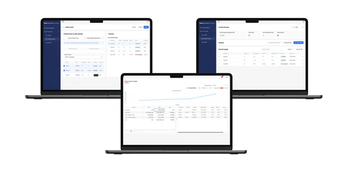A three-year EU-funded project, CASCADe, has developed new methodologies in which information is shared and displayed on a ship’s bridge, helping to improve efficiency on board and contribute toward the prevention of accidents at sea.
Drawing directly from the experience of seafarers, CASCADe has developed a new adaptive bridge design methodology that treats both human agents and electronic equipment as parts of a cooperative system. This allows for the sharing of information to be optimized.
In addition, CASCADe has developed a set of adaptive bridge displays. A touch screen ‘Shared Display’ is intended to aid communication and co-operation on the bridge. This tool is fully customizable and allows one screen to show multiple sources of information in whatever configuration is most suitable for a particular situation. The ‘Shared Display’ provides functionality to graphically annotate maps, leave notes for other crew members or complete checklists electronically.
Moreover, the CASCADe console was integrated with tools used by pilots in their Portable Pilot Units (PPUs). Firstly, CASCADe developed a protocol to share pilotage routes between the PPU and the ship’s electronic charts. Secondly, a link was established between the PPU and the bridge screens to allow mirroring of information from the PPU screen, enabling crew members to see extra information normally only available to the pilot.
All of these CASCADe tools were tested on both a physical simulator (a ship simulator used for training) and a virtual simulator (a software-based simulation of a ship bridge). The virtual simulation platform makes it possible to test new bridge designs at the earliest stages of development, based purely on computational models. By simulating human-machine interaction, it is possible to analyze information flow and optimize the information exchange between seafarers and bridge equipment.
Through innovative research techniques such as modeling and simulation, listening to the experience of seafarers, cross-discipline collaboration and forward thinking ideas, CASCADe, which is coming to a close this month, has produced new concepts in bridge console design. By improving communication and cooperation and providing adaptive features on the bridge, CASCADe has contributed towards the prevention of accidents and the improvement of efficiency on board – impacts that will be felt by both individual seafarers and the maritime world as a whole.
Under the coordination of OFFIS (Oldenburg Research and Development Institute for Information Technology Tools and Systems), CASCADe included a consortium of seven project partners from five EU countries including BMT Group Ltd, Raytheon Anschuetz GmbH, Mastermind Shipmanagement Ltd, the University of Cardiff, Marimatech AS and Symbio Concepts & Products SPRL.
Four further associated partners including the Maritime Cluster Northern Germany, Nautilus International, NSB Niederelbe Schiffahrtsgesellschaft mbH & Co. KG and the University of Tasmania also supported the project.












